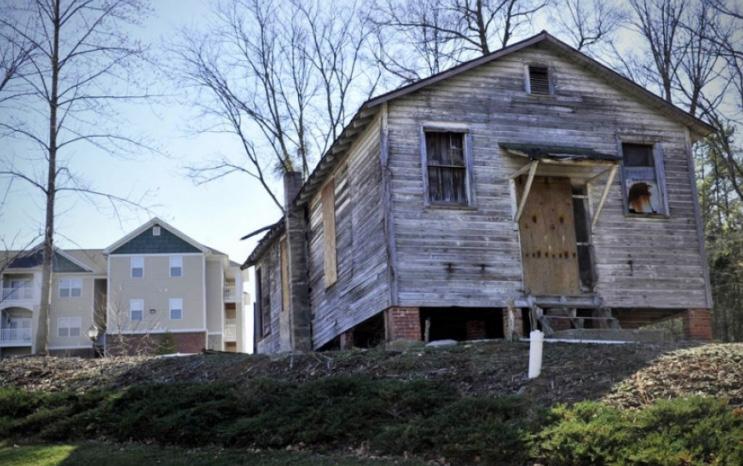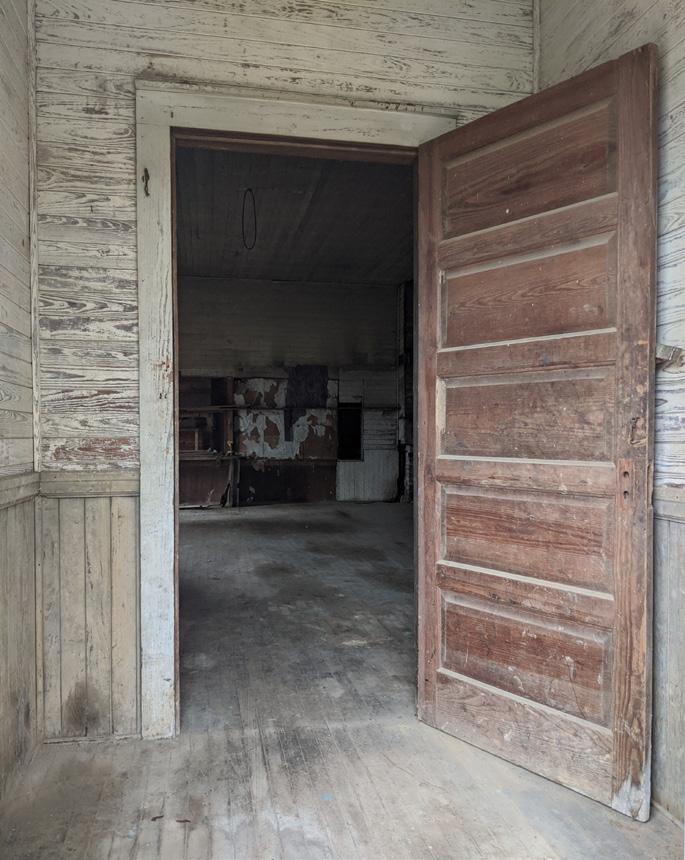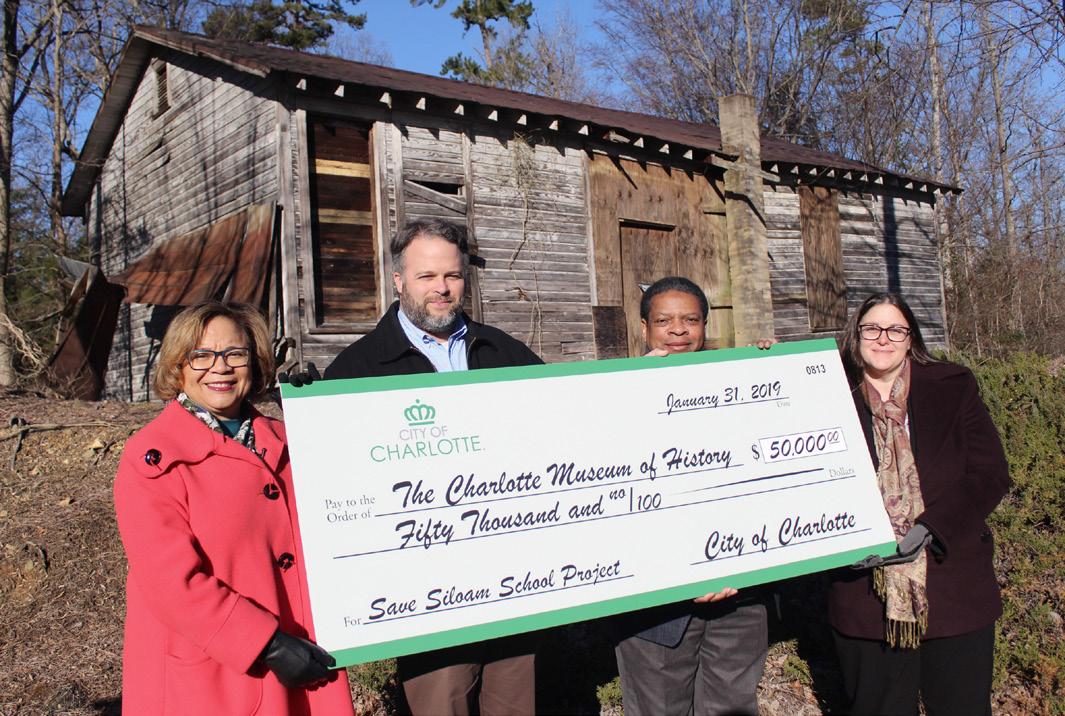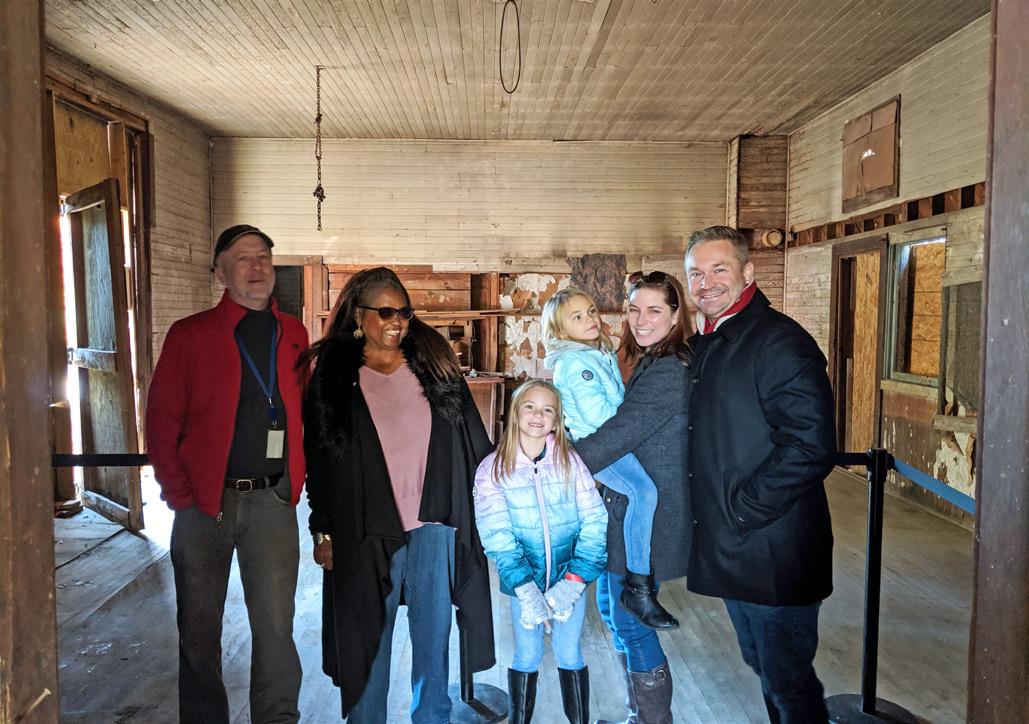
7 minute read
Saving the Siloam School
Preserving Our Culture
Helping to Save the Siloam School
Photo courtesy of The Charlotte Museum of History By Angela Lindsay
Charlotte sits on a mountain of African American history — but you may have to dig below the surface to uncover much of it. That is, in part, because many of the buildings and sites that once stood as symbols of African American pride and progress in the city have been torn down.
For example, the Good Samaritan Hospital was torn down in 1996 to make way for Bank of American Stadium. The Brooklyn neighborhood — a self-sustained, thriving Black community in Second Ward — was gutted due to “urban renewal.” These are just a couple of examples of the many Black sites that have not only been demolished but could be on the verge of being altogether forgotten. Fortunately, another structure known as Siloam School could be spared the same fate because dedicated citizens and entities are at work trying to preserve this important and historic site.
The Siloam School was built around 1920 as a school for African American students who lived in the rural Mallard
The Siloam School is one of thousands of Rosenwald-era schools built in the South during the Jim Crow era. It was included in the National Register of Historic Places on September 28, 2007.

Photo courtesy of Pixelatoms for Built City
Left: This print reimagines the Siloam School as it would have looked in its heyday, and how it will appear again once restored at The Charlotte Museum of History. Top Right: The Siloam School sits on its original site in north Charlotte, but the historic building is now hidden behind a modern apartment complex. Bottom Right: Vestibule and interior door at Siloam School.
Creek neighborhood. The building sits behind what is now Mallard Glen Apartments off Mallard Creek Church Road. Members of the community who utilized their talents as carpenters and tradesmen built the school which was named after Siloam Presbyterian Church.
“Not only was this Mallard Creek area home to the Siloam School, but prior to that, it was the home of enslaved people who lived and labored in this area,” said Adria Focht, president & CEO of the Charlotte Museum of History. For instance, the marked graves of Violet and Solomon Alexander are now inside the Thornberry Apartment Complex across the street from the Siloam School, in a gated area adjacent to the tennis courts. “Most people in Charlotte have no idea that encapsulated in this very small geography is the arc of history from enslavement to emancipation to Jim Crow segregation,” Focht said. “You can draw a straight line from this history to the current racebased inequities in our city, especially in education.”
The clapboard one-room building housed students in various grades. It was one of thousands of Rosenwald-era schools built in the South during the Jim Crow era. It tells a story of a rural, black community using largely its own resources to provide an education for their children while facing discrimination and entrenched segregation after slavery ended, according to Fannie Flono, retired Charlotte Observer associate editor and chairperson of the Charlotte Museum of History’s Save the Siloam School committee. The 100-year-old Siloam School is one of the oldest remaining African American schoolhouses in Mecklenburg County, and one of the few still standing Rosenwald-designed schools in the country.
Focht shared that at a time of institutionalized racism when Blacks weren’t getting a fair share of education resources, a coalition of Blacks and whites figured out how to get Blacks across the South better educational facilities. Rosenwald schools were the result of a collaboration between Dr. Booker T. Washington, other educators at the Tuskegee Institute and Julius Rosenwald, a philanthropist and president of Sears, Roebuck and Co., to build high-quality, free primary schools for African American children throughout the segregated rural South. Siloam School has been listed on the National Register of Historic Places since 2007 but is endangered because of its current state of deterioration and disrepair, according to charlottemuseum.org. To prevent its destruction like other iconic Black buildings that have been lost to time, the Charlotte Museum of History is leading a community fundraising campaign to save not just the physical schoolhouse but also the stories that once echoed through its halls. One story includes Nelson Young, a janitor who walked five miles from his home to the Adria Focht school to light the coal stove and get water
Fannie Flono
Photo courtesy of Fannie Flono




Left: City of Charlotte grants $50k to Save Siloam School in 2019 Right: Save Siloam School Project supporters at the November 2019 Hidden History Tour by The Charlotte Museum of History Bottom: Local family tours Siloam during November 2019 Hidden History Tour by The Charlotte Museum of History.
from the nearby spring before students arrived each day (charlottemuesum.org).
The Save Siloam School Project began with years of advocacy by Silver Star Community, Inc., which has been working to save Rosenwald Schools and Black spaces in Mecklenburg County for more than 10 years, Focht said. After engaging with Silver Star, the Charlotte-Mecklenburg Historic Landmarks Commission worked successfully to get the Siloam School listed on the National Register of Historic Places. The Charlotte Museum of History joined their efforts in 2017 and launched the Save Siloam School Project to coordinate fundraising and preservation work. Since then, the project has grown with the city and county providing significant funding and dozens of community members and organizations joining the project as champions, partners and funders to move it forward.
“As the first African American board chair of the Charlotte Museum of History, I am extremely honored and motivated to be a part of this great effort to give life back to this wonderful project,” said Dee Dixon, CEO of Pride Magazine. “To lead the Board during the Siloam School’s resurrection is indeed a part of my personal legacy as well.”
The museum’s goal is to raise $1 million through the project. Mecklenburg County and the City of Charlotte have pledged $160,000 with the county pledging an additional $150,000 towards the project. The City of Charlotte will give $10,000 from its current fiscal year budget to support architectural services needed to move the Siloam School to its future location on the museum’s campus.
As of September, the project has raised $660,000 in cash, pledges and in-kind donations (charlottemuseum.org). While generous corporate contributions have come in from corporations such as Lowe’s, Walmart, Bank of America, and Wells Fargo, perhaps the most meaningful backing should come from the very community the school was built to educate.
“There are really no sufficient words to express how important it is for the Black community to support this project,” Dixon said. “So many of our beautiful, historical structures have been demolished, destroyed or forgotten. Supporting the restoration of the Siloam School is an opportunity for us to say ‘not on our watch’ will this amazing piece of history vanish.” After restoration, Focht says the Siloam School will be a “permanent community resource devoted to history education and programming, including K-12 field trips, exhibits about racial justice and equity. The school also will have programs that honor the dedication of the African American families who came together to build it to provide their children with a quality education despite segregation and limited financial resources.”
Dixon added, “Preserving the Siloam School will ensure that generations to come will be able to actually look at this structure and understand the significance of the Black footprint in helping make Charlotte the great city it is today. The Siloam School says of the Black community: ‘We were here, and we accomplished much!’”

Dee Dixon is CEO of Pride Magazine and also Chair of the Charlotte Museum of History's Board of Trustees
Here’s how you can help save the Siloam School:
• Donate online at charlottemuseum.org/siloam • Send donations to: Charlotte Museum of History, 3500 Shamrock Drive,
Charlotte, NC 28215 • Visit the Siloam School exhibit at the
Charlotte Museum of History. P










